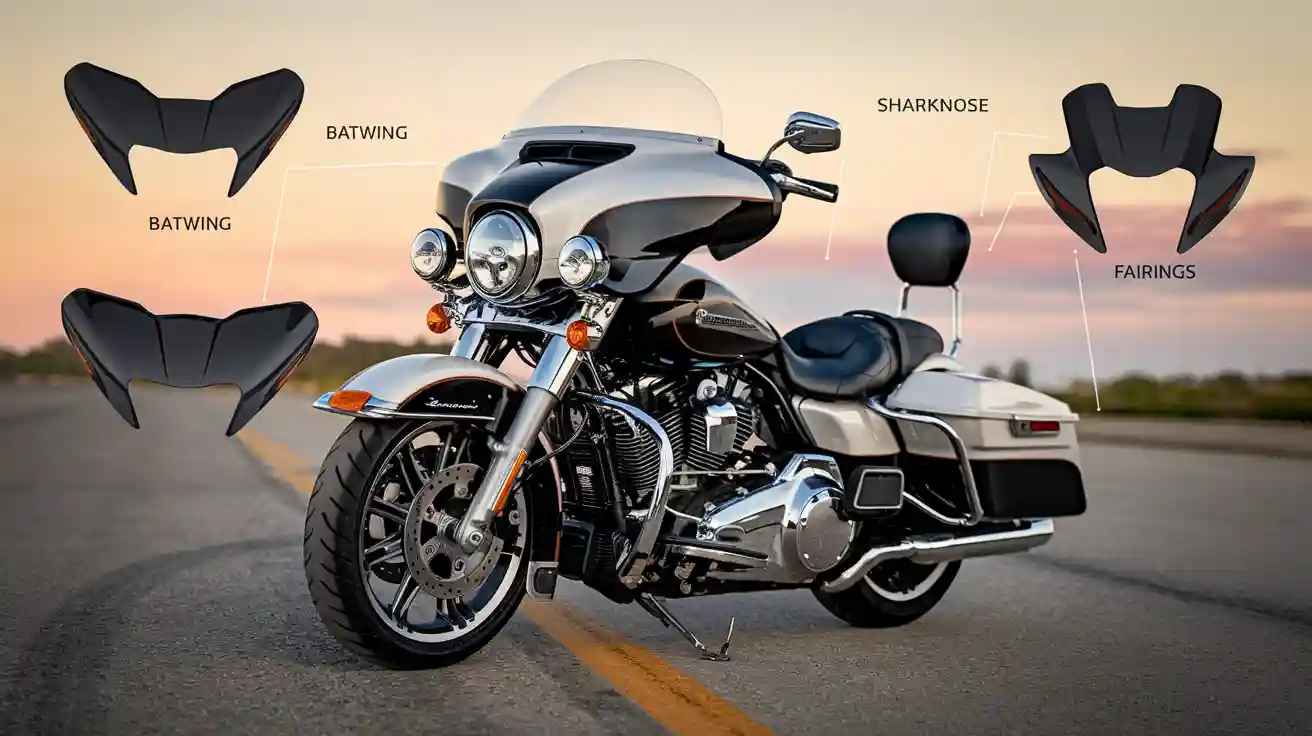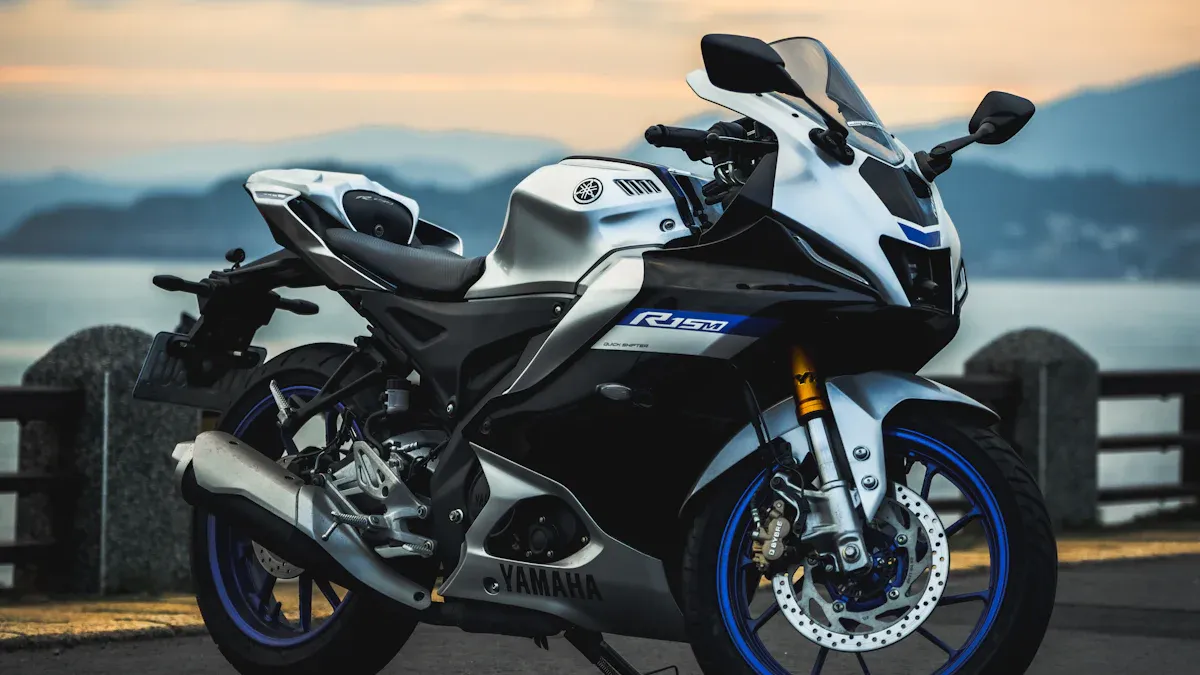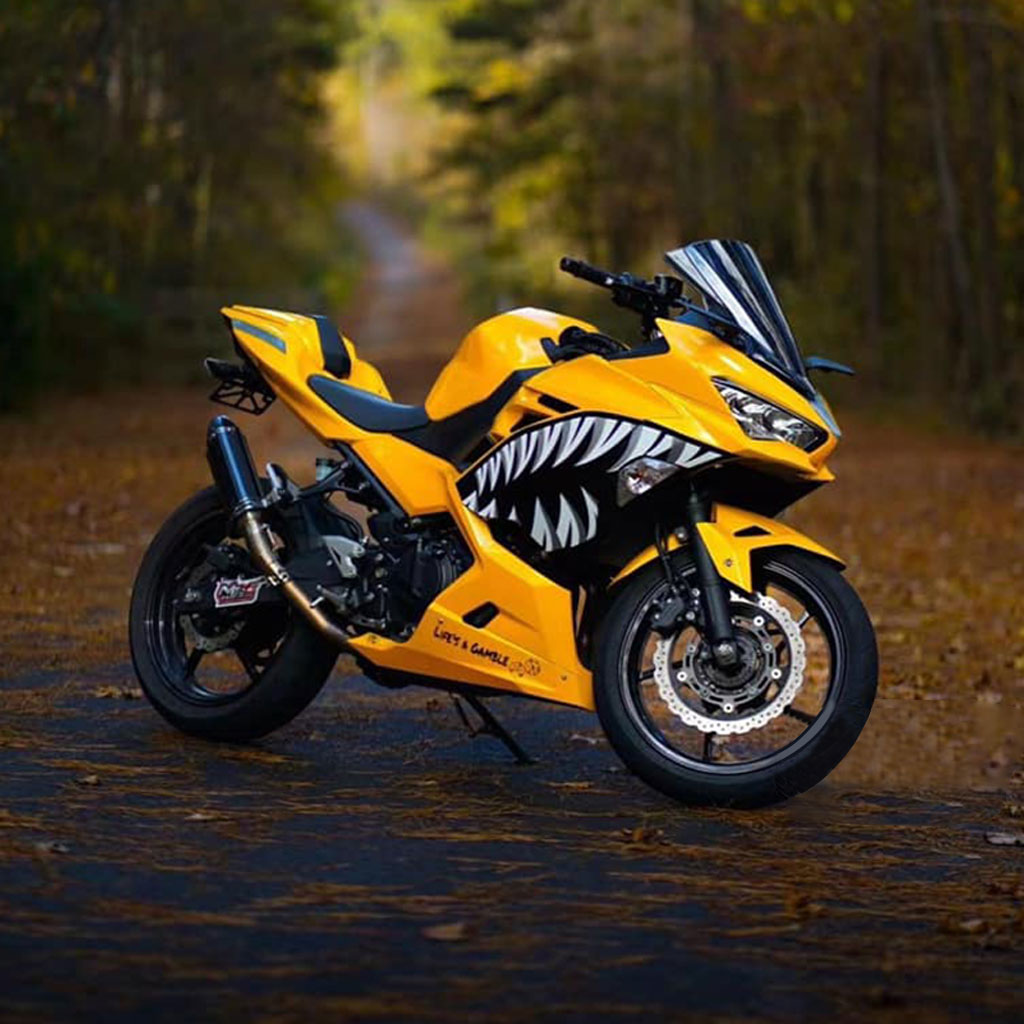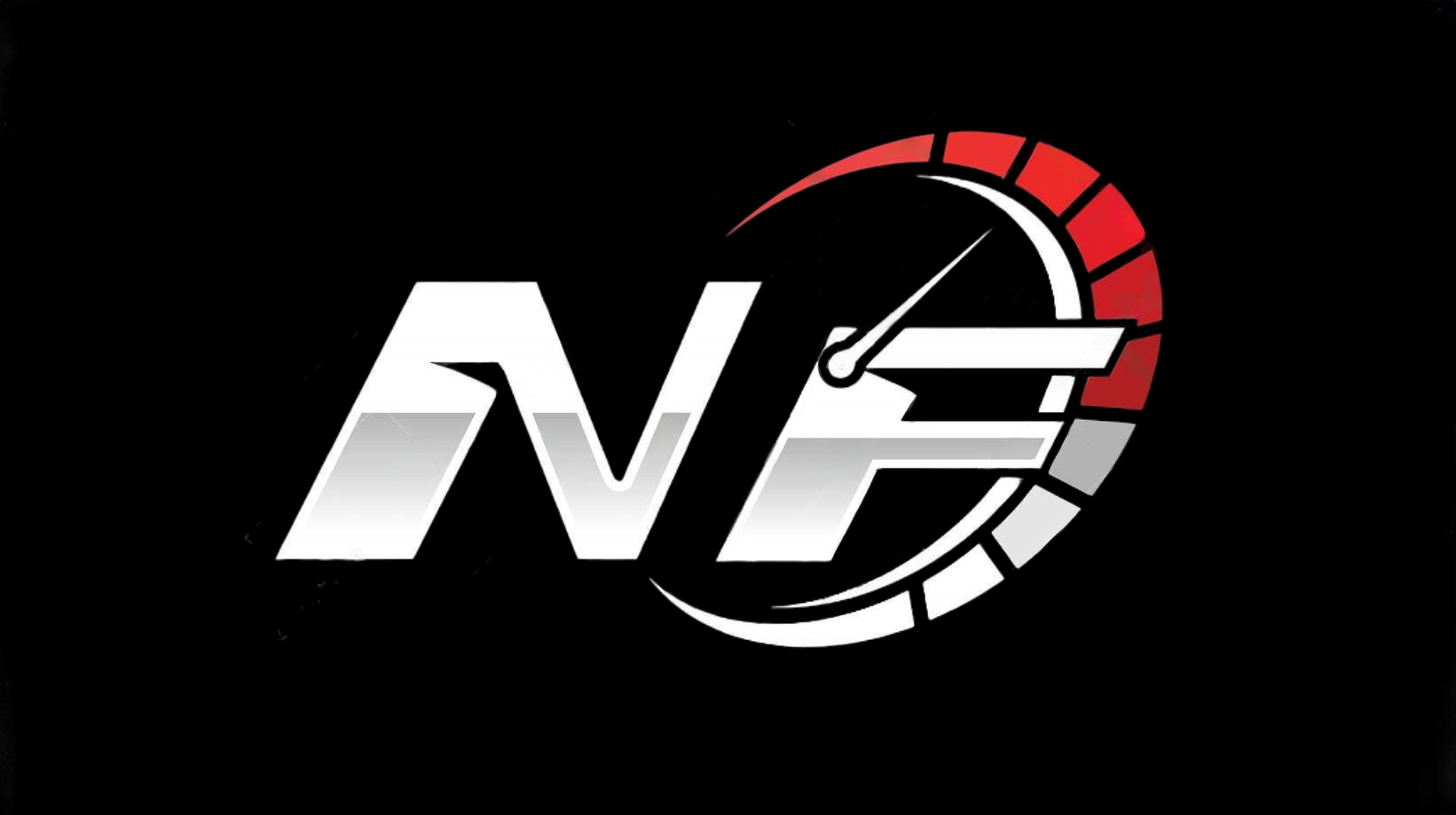Harley Fairing Types and Benefits Explained for Riders

You see many Harley fairing options on the road. Each type of fairing offers unique features for your ride. The different types of fairings, such as batwing or shark-nose, give you choices for wind protection and style. Picking the right fairing helps you stay comfortable and safe. Some types of fairing block wind better, while others make your bike look bold. You need to find the right fairing for your needs and make your ride better.
Overview of Harley Fairing Types
Quarter Fairings
You often see quarter fairings on Harley motorcycles that focus on style and simplicity. This type of fairing covers only the area around the headlight and handlebars. You get a small shield against the wind, but your hands and upper body remain exposed. Quarter fairings work best if you want a classic look or need a spot to mount accessories. Many riders choose this fairing for city rides or short trips. You will notice that quarter fairings do not offer much wind protection, so comfort on long rides may be limited. If you value appearance over function, this fairing fits your needs.
Half Fairings
Half fairings give you more coverage than quarter fairings. This type of fairing extends down to the middle of the forks, shielding your upper body from wind. You stay cooler because half fairings allow air to flow around your legs and feet. Riders often pick half fairings for a balance between comfort and ventilation. You get better aerodynamics than with a quarter fairing, but you still feel some wind on your lower body. Half fairings suit you if you ride in warm weather or want protection without feeling too enclosed. Many Harley models offer half fairings as an option for touring and daily use.
Full Fairings
Full fairings cover almost the entire front of your motorcycle, including the engine area. You get the highest level of wind, rain, and debris protection with this type of fairing. Full fairings help you stay comfortable on long rides and in bad weather. You also benefit from improved aerodynamics, which can boost engine performance. Many riders choose full fairings for touring or highway travel. You will find that full fairings often include extra features, such as winglets, to increase comfort and power. If you want maximum protection and a sleek look, a full fairing is the best choice.
Tip:
Use the table below to compare the main types of fairing and their common uses.
| Fairing Type | Common Use Cases | Key Characteristics |
|---|---|---|
| Quarter Fairing | Best for style, short trips, and mounting accessories | Covers headlight and handlebar area; minimal wind protection |
| Half Fairing | Good for balanced wind protection and ventilation; ideal for warm weather and daily riding | Shields upper body; leaves lower legs and feet exposed |
| Full Fairing | Perfect for long-distance touring, maximum comfort, and weather protection | Encloses most of the bike front and engine; best aerodynamics and rider comfort |
Batwing Fairings
You see the batwing fairing on many Harley-Davidson motorcycles. This fairing mounts to the front fork and moves with your handlebars. You get strong wind protection because the batwing directs air over your head and away from your chest. Even if you are tall, this fairing helps keep wind off your body. The single central air vent lets you control airflow, which can make your ride more comfortable in different weather.
Here is a table to help you compare the batwing fairing with other types of fairing:
| Fairing Type | Wind Resistance | Rider Fatigue Reduction | Vent Design | Suitability for Tall Riders | Additional Notes |
|---|---|---|---|---|---|
| Batwing | Directs wind over rider’s head, prevents wind hitting chest | Reduces fatigue on long trips | Single central air vent | Good for all sizes, even tall riders | Mounted on fork, moves with handlebars, adds stability |
You will notice that the batwing fairing adds some weight to the front, which can help with stability. The side cuts in the design also improve your view during slow turns. If you want a classic look and great wind protection, this fairing is a smart choice.
Shark-Nose Fairings
The shark-nose fairing stands out because it mounts directly to the frame of your motorcycle. This design keeps the fairing steady, even when you turn the handlebars. You feel less wind pulling on the front, which makes your ride smoother at high speeds. The triple splitstream vent system channels air around your helmet and shoulders. This reduces wind buffeting and helps you stay comfortable on long rides.
- The frame-mounted design improves stability and cuts through wind more easily.
- You get a secure, planted feel, especially on highways or in strong crosswinds.
- The low-profile windshield and vent system work together to manage wind pressure.
- You steer with less effort because the fairing does not add weight to the handlebars.
If you ride long distances or face changing weather, the shark-nose fairing gives you better control and less fatigue.
Handlebar-Mounted Fairings
Handlebar-mounted fairings, like the batwing, move with your handlebars. You feel a direct connection to the road, which helps with low-speed turns and city riding. This type of fairing gives you quick steering and a responsive feel. You notice the fairing’s weight when you turn, but it helps you stay stable at lower speeds.
Note:
Handlebar-mounted fairings work best for riders who want agility and easy handling in traffic or on winding roads.
When you compare handlebar-mounted and frame-mounted fairings, you see that each has its own strengths. Handlebar-mounted fairings give you nimble steering for city rides. Frame-mounted fairings, like the shark-nose, offer more stability at high speeds. You can choose the best type based on your riding style and needs.
Frame-Mounted Fairings
You will notice that frame-mounted fairings attach directly to the motorcycle’s frame instead of the handlebars. This design keeps the fairing steady, even when you turn the handlebars. You get a smoother ride at high speeds because the fairing does not move with every steering input. Many riders choose frame-mounted fairings for long-distance touring. You feel less wind resistance on your arms, which helps reduce fatigue on long rides.
Frame-mounted fairings improve stability, especially when you ride on highways or in strong crosswinds. The fairing stays in place, so you do not have to fight against extra weight on the handlebars. You can steer more easily and keep better control of your bike. Many Harley touring models use this type of fairing because it offers a secure and comfortable ride. If you want better handling and less strain on your arms, a frame-mounted fairing is a smart choice.
Tip:
Frame-mounted fairings often come with advanced vent systems. These vents help manage airflow and reduce wind buffeting around your helmet and shoulders.
Lower Fairings
Lower fairings sit near the bottom of your motorcycle, covering the area around your legs and the engine. You gain extra protection and comfort when you add lower fairings to your Harley. Many riders notice that these fairings make a big difference, especially in cold or rainy weather.
- Lower fairings deflect cold air away from your legs, hands, and body. You stay warmer and more comfortable on windy days.
- They protect your hands and feet in case of an accident or if you drop your bike.
- Lower fairings shield the engine from road debris, which helps your engine last longer.
- You experience less wind buffeting, which reduces muscle fatigue and makes long rides easier.
You also get better stability because lower fairings reduce the surface area exposed to crosswinds. This design creates downforce, which improves tire grip and control. Lower fairings act as a barrier against road debris, keeping you and your bike safer. Many riders find that lower fairings improve aerodynamics, making highway rides smoother and less tiring.
Benefits of Fairing Types

Wind Protection
You feel the wind every time you ride your Harley. A fairing helps block the wind from hitting your body. This wind protection makes your ride smoother and less tiring. When you use a full fairing or a Batwing fairing, you notice that the air moves over your head and chest. This keeps you from getting tired quickly, especially on long trips.
Many Harley touring models, like the Street Glide and Tri Glide Ultra, use large fairings with split-stream vents and tall windshields. These features shield you from wind and road debris. You stay comfortable and safe, even when you ride for hours. The benefits of fairing include less wind buffeting and better control of your motorcycle.
Tip:
If you want to reduce wind fatigue, choose a fairing with a vent system. This design lets you control airflow and keeps your helmet steady.
Rider Comfort
You want to enjoy every mile on your Harley. Rider comfort improves when you have the right fairing. A good fairing keeps cold air and rain away from your body. You stay warmer and drier, even in bad weather. Lower fairings protect your legs and hands, making your ride more pleasant.
Long-distance riders often pick motorcycles with large front fairings and windscreens. These features help you sit upright and stay relaxed. The Batwing and shark-nose fairings on Harley touring bikes cut wind and reduce rider fatigue. You feel less strain on your arms and shoulders. This means you can ride longer without getting tired.
A well-designed fairing also helps reduce wind fatigue. You do not have to fight against strong gusts or swirling air. You get a smoother, more controlled ride. This comfort lets you focus on the road and enjoy your journey.
Performance and Handling
You want your Harley to perform well in every situation. Fairings play a big role in improved performance and handling. The shape of the fairing changes the way air flows around your motorcycle. This is called aerodynamics. When you have better aerodynamics, you get reduced drag. Your bike moves through the air more easily, which can increase speed and fuel efficiency.
Harley-Davidson uses advanced tools like Computational Fluid Dynamics (CFD) to design fairings. The Sharknose fairing on the Road Glide is a good example. It helps manage airflow and reduces helmet buffeting. You feel more stable at high speeds because the fairing cuts through the wind.
However, fairings also add surface area to your bike. This can make your motorcycle more sensitive to crosswinds. Handlebar-mounted fairings may affect steering in strong winds. You might notice that your bike feels harder to control at low speeds or in gusty weather. The added weight from a fairing can also change how your Harley handles, especially when you start or stop.
Note:
The design and shape of the fairing matter. Well-designed fairings give you aerodynamic benefits and improved performance, while poor designs can make handling more difficult.
You get the best results when you choose a fairing that matches your riding style. If you want more stability and less wind fatigue, look for a fairing with a shape that improves aerodynamics and reduces drag. This choice helps you ride farther, faster, and with more control.
Weather and Debris Protection
You face many challenges on the road, including rain, flying debris, and changing weather. A fairing gives you a strong shield against these hazards. When you ride in the rain, the fairing deflects water away from your body and helmet. This keeps your visor clear and helps you see better. You stay drier and more comfortable, even during heavy showers.
Fairings also offer protection from debris. Small rocks, glass, and even insects can hit you at high speeds. The fairing angles the air and debris away from your chest and legs. Lower fairings give extra coverage for your legs and feet. You reduce your risk of injury if you encounter road hazards or have a minor crash. Studies show that riders with lower fairings suffer fewer leg injuries and fractures compared to those without them.
You also benefit from improved aerodynamics. The fairing directs airflow smoothly around your bike. This reduces wind resistance and helps you ride longer without getting tired. Even a small fairing can make a big difference in comfort and safety. You feel less strain on your body, especially on long trips or at high speeds.
Tip:
Choose a fairing with a vent system for better airflow control. This feature helps you manage temperature and reduces fogging on your visor.
Aesthetic Appeal
You want your Harley to stand out and reflect your personality. The fairing plays a big role in your bike’s appearance. Many riders choose a fairing for its bold shape and classic lines. You can pick from different styles, colors, and finishes to create a custom look that matches your taste.
Modern Harley models blend heritage with new design trends. You see sleek profiles, premium materials, and unique color schemes. Some riders prefer deep jewel tones or metallic shades with pearlescent effects. Others go for custom paint jobs with airbrushed designs and chrome accents. These choices let you express your style and make your bike unique.
Fairing customization is popular among Harley owners. You can swap out fairings, add graphics, or upgrade to a different shape. Removable fairings, like those on the Sport Glide, give you flexibility. You can change your bike’s look for different occasions or riding needs.
A well-chosen fairing does more than improve aerodynamics and protection. It turns your motorcycle into a statement piece. You show off your creativity and attention to detail every time you ride.
Note:
Fairing customization lets you balance function and style. You get the wind protection and aerodynamics you need, along with a look that sets your Harley apart.
How to Choose the Right Harley Fairing
Fit and Compatibility
You want the right fairing to fit your Harley perfectly. Not every fairing matches every model. Before you buy, check if the fairing fits your bike’s year and style. Some fairings need special brackets or adjustable raked triples for proper mounting. You might run into clearance issues between upper and lower fairings, especially if you use fairing lowers. Sometimes, you need to replace main upper fairing supports or side supports. Upgrading to a newer fairing model may also require a new inner fairing or radio mount. Wiring can be tricky, especially if your bike’s electrical system is different from the fairing’s setup. Some older models need a Buss System for new gauges. Many manufacturers, like Klock Werks, offer complete fit kits with all the hardware you need. They also give you detailed instructions and expert advice to help you get the right fit.
Tip: Always double-check compatibility before you buy. Ask for expert help if you have questions about your model.
Material and Build Quality
The material of your fairing affects how it performs and how long it lasts. Most Harley fairings use ABS plastic, fiberglass, or carbon fiber. Here’s a quick comparison:
| Material | Durability | Weight | Notes |
|---|---|---|---|
| ABS Plastic | Good impact resistance | Lightweight | Flexible, affordable, easy to repair |
| Fiberglass | Very durable, corrosion-resistant | Lighter than ABS | Easy to fix, strong, flexible |
| Carbon Fiber | Superior strength-to-weight | Ultra-light | Most expensive, best for performance |
ABS plastic works well for everyday riders. It is strong and flexible. Carbon fiber is the lightest and strongest, but it costs more. Fiberglass gives you a good balance of strength and weight. Clean your fairing with mild soap and water. Polish it to protect against UV damage. Check for cracks or loose fasteners often to keep it in top shape.
Weight and Balance
The weight of your fairing changes how your Harley handles. Touring fairings weigh more than sport or cruiser fairings. Heavier fairings can slow down acceleration and braking. You need to adjust your riding style to keep balance, especially on bigger bikes. Lighter fairings, like those made from carbon fiber, make your bike easier to handle and corner. Proper weight distribution helps you stay in control and ride safely. If you want customizable options, look for fairings that let you choose the material and features that fit your needs.
Cost Considerations
When you shop for a fairing, you notice a wide range of prices. OEM Harley fairings, like the '24+ Road Glide Fairing, usually cost between $949 and $999. These factory parts sit at the higher end of the price range because they offer top quality and a perfect fit. Aftermarket fairings often cost less, sometimes starting around $600 or even lower if you choose kits from overseas. The lower price can seem attractive, but you may face issues with fitment or finish.
Here is a quick comparison to help you understand the differences:
| Aspect | OEM Fairings ($949-$999) | Aftermarket Fairings (from $600) |
|---|---|---|
| Quality | High, durable, exact fit | Varies, possible fitment issues |
| Installation | Easier, designed for your bike | May need adjustments |
| Material | ABS plastic, fiberglass, metal | Similar, but quality can vary |
| Extra Costs | Paint, decals, labor | Paint, labor, possible DIY savings |
You should also think about extra costs. Painting, decals, and labor can add to the total price. If you install the fairing yourself, you might save money, but you need the right tools and skills. Always check if the fairing fits your Harley model before you buy. Choosing the right fairing means balancing cost, quality, and fit.
Tip:
Paying more for an OEM fairing often means fewer problems during installation and better long-term durability.
Intended Use and Riding Style
You need to match your fairing to your riding style and environment. If you ride long distances on highways, a shark-nose fairing, like the one on the Road Glide, gives you strong wind protection and stability. This frame-mounted design helps you stay comfortable and reduces fatigue on open roads. For city rides or countryside trips, a fork-mounted fairing, such as the one on the Road King, offers nimble handling and a classic look.
Check this table for quick guidance:
| Fairing Type | Best For | Key Benefits |
|---|---|---|
| Batwing | Touring, highway cruising | Wide coverage, great wind protection |
| Shark-nose | Long-distance, high-speed rides | Stable, reduces fatigue |
| Quarter Fairing | City, short trips | Light, stylish, easy handling |
| Road King Fork-mounted | Urban, scenic routes | Nimble, traditional style |
If you want to add speakers or a large windscreen, look for fairings that support these features. Lightweight materials, like carbon fiber, help keep your bike easy to handle. Large fairings give you more protection but can make your bike harder to maneuver at low speeds. Quick-release fairings let you switch styles for different rides.
Choosing the right fairing depends on how and where you ride. Think about your daily routes, the weather, and the comfort you want on your Harley.
Harley Fairing Installation Guide
DIY Installation Steps
You can install a fairing on your Harley at home with the right tools and patience. Start by gathering all the parts and reading the instructions. Remove the old headlight or windshield if your bike has one. Hold the new fairing in place and check for any fit issues. Attach the mounting brackets to your bike’s frame or handlebars. Use the bolts and hardware that come with your kit. Tighten each bolt slowly and evenly. Connect any wiring for lights or speakers. Double-check that everything feels secure before you ride.
Tip: Take photos as you remove old parts. These pictures help you remember where each piece goes during reassembly.
Professional Installation Options
If you want a stress-free experience, you can visit a Harley dealership or a trusted motorcycle shop. Professionals know how to handle tricky installation steps. They make sure your fairing fits perfectly and works with your bike’s electronics. Shops often have special tools that make the job quick and easy to install. You save time and avoid mistakes. Many riders choose this option for custom fairings or when adding extra features like radios or speakers.
Tips for Ensuring Proper Fit
You may face challenges when you install a fairing, especially if your bike has aftermarket handlebars. Wider bars or taller bushings can cause the fairing to hit the radio or switch cap. Sometimes, the lower cap will not line up under the radio. To fix this, you can countersink the bolt holes to fit taller bushings. Avoid grinding or shaving the lower cap if possible. Careful adjustments help you get a clean fit without damaging your parts.
- Always check for clearance around the handlebars and radio.
- Test the fairing position before tightening all bolts.
- Use the right tools to avoid stripping screws or bolts.
A fairing that is easy to install and fits well gives you better protection and style on every ride.
Choosing the right fairing helps you get the most comfort and protection on your Harley. You should think about your riding style and the benefits each type offers. A full fairing gives you strong wind and weather protection. If you match your fairing to your needs, you enjoy a better riding experience every time you hit the road.
Tip: Review your options before you buy to make sure you get the best fit for your bike.
FAQ
What is the main difference between a batwing and a shark-nose fairing?
You see the batwing fairing mounted on the handlebars. The shark-nose fairing attaches to the frame. The batwing moves with your steering. The shark-nose stays steady, giving you more stability at high speeds.
Can you install a Harley fairing by yourself?
You can install many fairings at home with basic tools. Follow the instructions in your kit. Take your time and check each step. If you feel unsure, ask a professional for help.
Do fairings affect your Harley’s fuel efficiency?
You get better aerodynamics with a fairing. This can help your Harley use less fuel, especially on highways. Large fairings may add weight, but the wind protection often improves your overall efficiency.
Which fairing offers the best protection in bad weather?
You get the most protection from a full fairing. It covers your upper body and engine. You stay drier and warmer in rain or cold wind. Lower fairings add extra coverage for your legs.
Can you customize the look of your Harley fairing?
You can choose from many colors, finishes, and designs. Some riders add graphics, chrome, or custom paint. You can swap fairings or add accessories to match your style.
See Also
Comprehensive Guide To Understanding Motorcycle Fairings Today
Easy Motorcycle Fairings Guide For Riders Across The UK
Evaluating The Benefits And Drawbacks Of Motorcycle Fairings
Comparing Nicefairings And Amotopart For Best Fairing Value
Top Motorcycle Fairing Customization Ideas Every Rider Should Know

